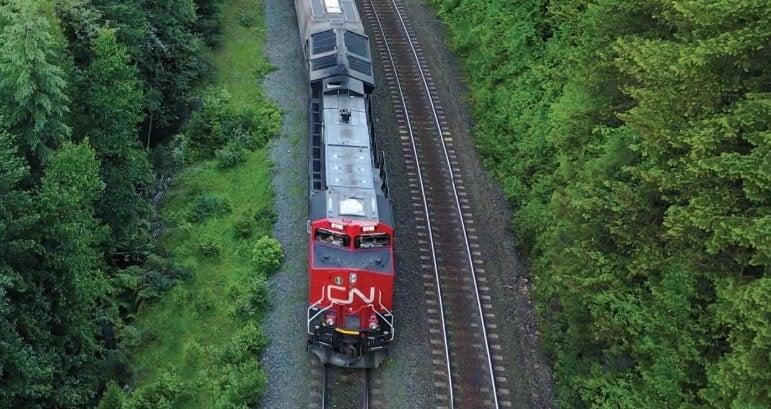The railroads have been riding a bumpy track for the past several years, and for some of them it continues.
FreightWaves reported on the late Hunter Harrison’s methods to increase efficiency in the railroading business after he took the helm of CSX in 2016. Harrison introduced the practices of precision scheduled railroading (PSR) that he had used successfully at the Illinois Central Railroad, Canadian National Railway and Canadian Pacific Railway. Harrison’s actions began to transform CSX, the nation’s third-largest railroad, from a hub-and-spoke system to a more direct point-to-point system.

At the time, shippers from all over the U.S., especially manufacturers and commodities producers in the middle of the country, were seeing disastrous effects on their supply chain from the implementation of new protocols. They complained about having to scrap their old schedules and spend more time loading smaller batches of cars. They bemoaned clogged networks and chronic delays. Above all, they expressed anger about a railroad monopoly that valued short-term profits over long-term customer relationships.
The grievances were backed up by loads of documented hiccups. At the time FreightWaves reported on a North Carolina Kellogg’s factory that had to suspend production because of late deliveries, a Pringles factory in Tennessee that barely avoided closure when raw materials didn’t show up on time, and Amtrak trains running on CSX lines in Indiana reporting a dramatic 2,200% increase in delays.

Two years into the burgeoning PSR experiment, things in the rail industry are running a little more smoothly. But has PSR proved to be everything that Harrison said it could be?
The answer seems to be yes and no.
A new report by the Wall Street Journal reports that certain aspects of the PSR methodology are doing well for the railroads. However, a new problem is coming down the track from the opposite direction – the macro environment is cancelling out any gains made by PSR strategies.
For instance, at the beginning of the PSR era, trucking freight capacity was highly constrained in the United States. For example, during this period refrigerated (reefer) loads from California we’re costing from $9,000 to $10,000 to get to the Northeast and shipper rejection rates (because of the costs) were exploding. But the story is a little bit different now.
Trucking freight capacity is looser than it was in the early days of PSR, so it is a lot more difficult for railroads to compete based upon price. Furthermore, though precision railroading has provided for more efficient scheduling of trains, they still arrive on set schedules. But a truck pulls up do your bay door whenever you need it only when you need it. “The wins that are occurring are being overwhelmed by macroeconomics,” said Lance Fritz, CEO of Union Pacific.
Given the oligopoly of the railroads in the United States, shippers have frequently felt that service has been lacking. The railroads are desperately trying to change this reputation and they are counting on PSR to help that cause. “That’s the sell, but we have to undo decades of bad service and experience,” CSX chief executive Jim Foote said in an interview last week. So far, the railroads have found it a tough line to deliver despite the lower shipping prices that railroads can frequently show to shippers.

New customer-facing technologies have been a part of the PSR story as well, but at this point it appears that they haven’t done enough yet to persuade shippers to use railroads more. For instance, Union Pacific has just rolled out a new alert system that tells customers when rail cars arrive at the local railroad yard. But so far these changes have not replaced the convenience of a truck.
In addition to new technologies, the railroads have been getting leaner by cutting excesses. CSX cut costs by 8% in the third quarter of 2019, which softened the blow of a 5% drop in revenue, reflecting around the same percentage drop in railroad volume. Union Pacific has produced even more drastic cuts by laying off 13% of its workers since last year, which decreased operating expenses by 10%. However, revenues fell 7% which impacted much of those cost savings. In the end Union Pacific could not stave off a fall in profit of 2% to $1.6 billion for the quarter.

Buffalo
‘“That’s the sell, but we have to undo decades of bad service and experience,” CSX chief executive Jim Foote said in an interview last week.’ You cannot undo decades of bad service and experience by making them worse – management doesn’t understand operations because they have been sitting behind a desk for too long.
Gerald Marcus
As a retired engineer I realize the issue is in middle management still. My uncle said this 35 years ago and still is the problem